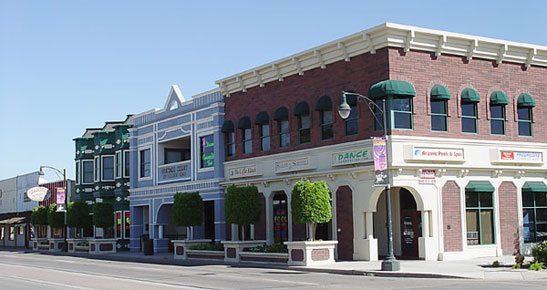Realtor.com® today released its list of America’s Top ‘Boom Towns’. Led by Gilbert, Ariz. (85297); Los Angeles (90012), and Dallas (75201), these neighborhoods are striking it rich when it comes to new home construction, job creation and an increasing number of households – the gold mine for housing market growth.
“The strength of the residential real estate market is closely correlated to growth in jobs and households,” said Jonathan Smoke, chief economist for realtor.com®. “The good news for these markets is that these growth factors have already started to translate into new construction. At the same time, it may be a year or so before some markets on our list start see an increase in inventory. If anything, this is a road map for where builders should be thinking about where to break ground next.”
America’s Top Boom Towns are demonstrating some of strongest growth in jobs, household formation, and housing starts across the country. Every market on the list has experienced between one and five times the average job growth of the top 100 counties in the country. Household growth in each of these areas is between one and seven times the average growth of the top 100 areas. New home starts are between one and six times the average growth in the top 100 counties. Most importantly, each individual ZIP code is projected to see a growth in households of between nine and 19 percent over the next five years.
Boom Towns
1. 85297 Gilbert, Ariz.
Largest neighborhood: Power Ranch
Part of the Phoenix metropolitan area, Gilbert is located just over 30 miles east of downtown Phoenix in close proximity to where GoDaddy and PetSmart® have significant operations. The sunny neighborhood of 85297 is highly sought after by both snowbirds and locals for its close proximity golf courses and country clubs. The biggest draw for locals is the strong school district, Higley Unified School District, that’s home to Centennial Elementary, which was ranked No. 1 in the state in 2014.
- ZIP code 85297 is expected to see households grow by 15.9 percent over the next five years, 4.2 times faster than the rest of Maricopa County, where more than 25,000 new housing starts and in excess of 53,000 new jobs are forecast for 2016 – that’s 5.7 and 5.8 times more than the average of the top 100 counties in the country, respectively.
2. 90012 Los Angeles
Largest neighborhoods: Historic Cultural, Elysian Park, Mission Junction
Los Angeles is the second-largest city in the U.S. The 90012 ZIP code is located in central Los Angeles and encompasses several neighborhoods including Elysian Park, Mission Junction, Little Tokyo and Chinatown. In recent years, the area has seen surge in interest among higher income residents, driven by vibrant cultural offerings – such as the Walt Disney Concert Hill and Dorothy Chandler Pavilion – restaurants and nightlife, as well as new residential development.
- ZIP code 90012 is expected to experience household growth of 8.8 percent over the next five years. Los Angeles County is expected to see more than 22,000 new housing starts and 65,000 new jobs created in 2016, 5.0 times and 7.2 times more than the average of the top 100 counties in the country, respectively.
3. 75201 Dallas
Largest Neighborhoods: Downtown, Arts District, Uptown, Farmers Market
Located in downtown Dallas, the 75201 zip code is home to the Dallas Museum of Art, American Airlines Center—where the city’s National Basketball Association and National Hockey League teams play – and is just steps away from Baylor University Medical Center. This neighborhood has undergone a dramatic transformation since the early 2000s when the “Dallas Trinity River Project” began bringing parks, trails, and nature centers to the area. It’s close proximity to major employers, shopping, restaurants and Klyde Warren Park make this neighborhood highly sought after by millennials. Urban condos, lofts and townhomes are popping up everywhere.
- Households in 75201 are forecast to grow by 14.9 percent over the next five years. Dallas County is expected to see more than 16,000 new housing starts and 40,000 new jobs created in 2016, 3.8 times and 4.5 times more, respectively, than the average of the top 100 counties in the country.
4. 33132 Miami
Largest Neighborhoods: Downtown, Midtown, Seaport
Famous for its beaches and warm climate, Miami is also a hub for finance, commerce, culture, media, entertainment and the arts. Traditionally, downtown Miami was a bustling business center by day that became a ghost town by night, but urban development with projects such as Miami Worldcenter have brought tens of thousands of new residents to the area, many of whom are millennial professionals attracted to the shopping and nightlife as well as their ability to walk to work.
- ZIP code 33132 is expected to see households grow by 14.9 percent over the next five years. The forecast calls for more than 13,000 new housing starts and 44,000 new jobs created in 2016 in Miami-Dade County. This is three times the housing growth and 4.8 times the jobs anticipated on average in the top 100 counties in the country, respectively.
5. 89179 Las Vegas
Largest Neighborhoods: Mountain Edge
Las Vegas is the most populous city in the state of Nevada and is internationally known as a resort destination. Located roughly 14 miles from the Las Vegas strip, the 89179 zip code primarily encompasses part of a planned community known as Mountain’s Edge. Since development of Mountain’s Edge began in 2004, it has ranked among the top-selling master planned communities in the U.S. due to its extensive outdoor amenities such as its large scale community parks, trails and open spaces. Two elementary schools – William V. Wright Elementary School and Carolyn S. Reedom Elementary School – are located within the community itself and in close proximity to ZIP 89179.
- Households in ZIP code 89179 are expected to grow by 19.4 percent over the next five years. Clark County is anticipated to see more than 14,000 new housing starts and 23,000 new jobs created in 2016 which is 3.3 times housing growth and 2.5 times the jobs growth anticipated on average in the top 100 counties in the country, respectively.




